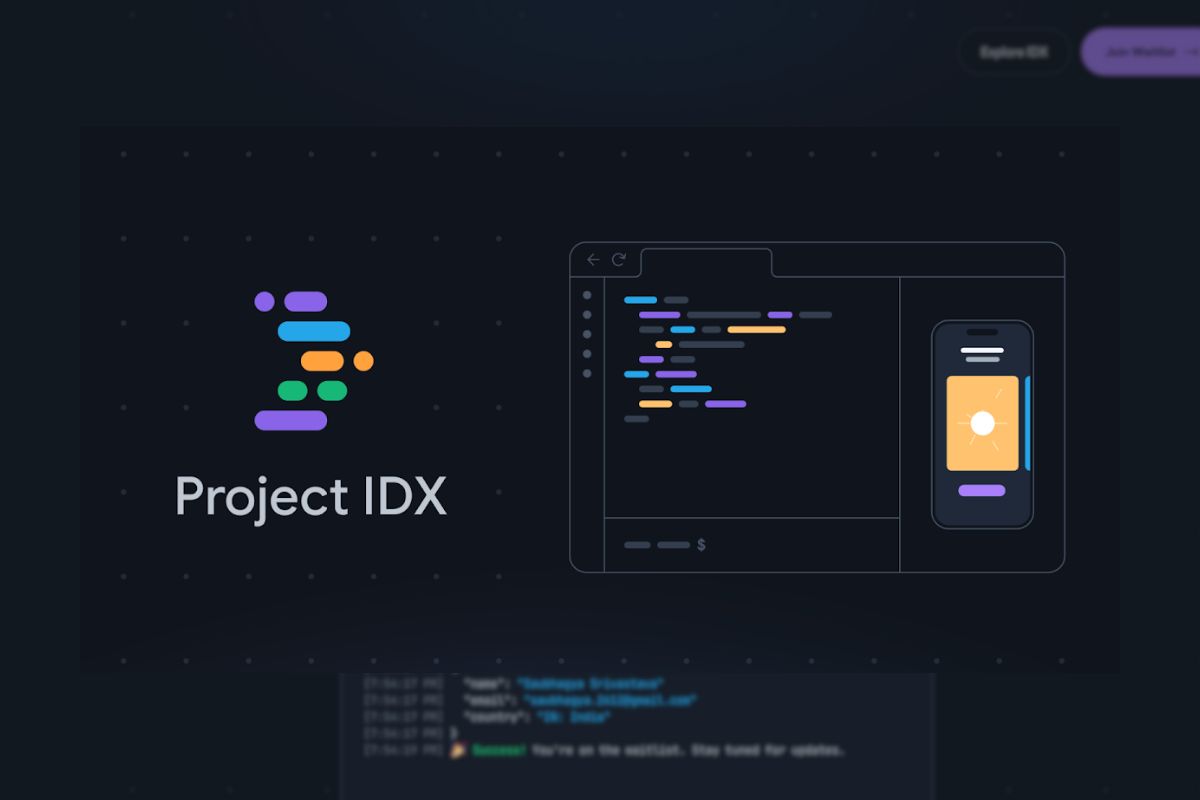Google has announced the launch of Project IDX, introducing an AI-powered browser-based development environment designed for building comprehensive web and multi-platform applications. Currently supporting frameworks such as Angular, Flutter, Next.js, React, Svelte, and Vue, as well as languages like JavaScript and Dart, Project IDX is set to expand its support to include Python, Go, and other languages in the future.
Rather than creating an entirely new integrated development environment (IDE), Google has chosen to leverage Visual Studio Code — an open-source IDE — as the foundation of Project IDX. This strategic decision allowed the team to concentrate on seamless integration with Codey, Google’s PaLM 2-based foundational model for programming tasks. Codey empowers IDX with features like intelligent code completion, a chatbot reminiscent of ChatGPT/Bard that assists developers with general coding inquiries and those directly related to their ongoing code projects (including explanations), and the capacity to implement contextual code actions such as “add comments.”
The Project IDX team elaborated on their goals in the announcement, stating, “With Project IDX, we’re exploring how Google’s innovations in AI — including the Codey and PaLM 2 models powering Studio Bot in Android Studio, Duet in Google Cloud and more — can help you not only write code faster, but also write higher-quality code.”

Functioning as a cloud-based IDE, Project IDX naturally integrates with Google’s Firebase Hosting (and Google Cloud Functions), offering developers the ability to import existing code from GitHub repositories. Each workspace enjoys access to a Linux-based virtual machine (VM) and, in the near future, embedded Android and iOS simulators accessible directly within the browser.
Having tested Project IDX prior to its official launch, I found the IDX chatbot to be functional but somewhat detached from the source code. For instance, it lacks the ability to directly manipulate the code (though this limitation applies to most of Google’s competitors as well) and doesn’t appear to recognize the specific code segments selected by the user in the editor. Given that it’s still in its early stages, Google acknowledges that the team is “just at the beginning of this journey,” with plans to introduce additional capabilities over time.
Although GitHub’s Copilot, Amazon’s CodeWhisperer, and similar platforms offer AI-driven coding features, Google’s unique emphasis on full-stack development provides a distinct angle. GitHub and Amazon also offer cloud-based development environments through Codespaces and AWS Cloud9, respectively. Additionally, Google offers Cloud Code IDE plugins that could potentially integrate Codey into various popular IDEs. Project IDX serves as a testing ground for showcasing Google’s AI capabilities to developers, and its evolution into a comprehensive IDE remains to be seen.



